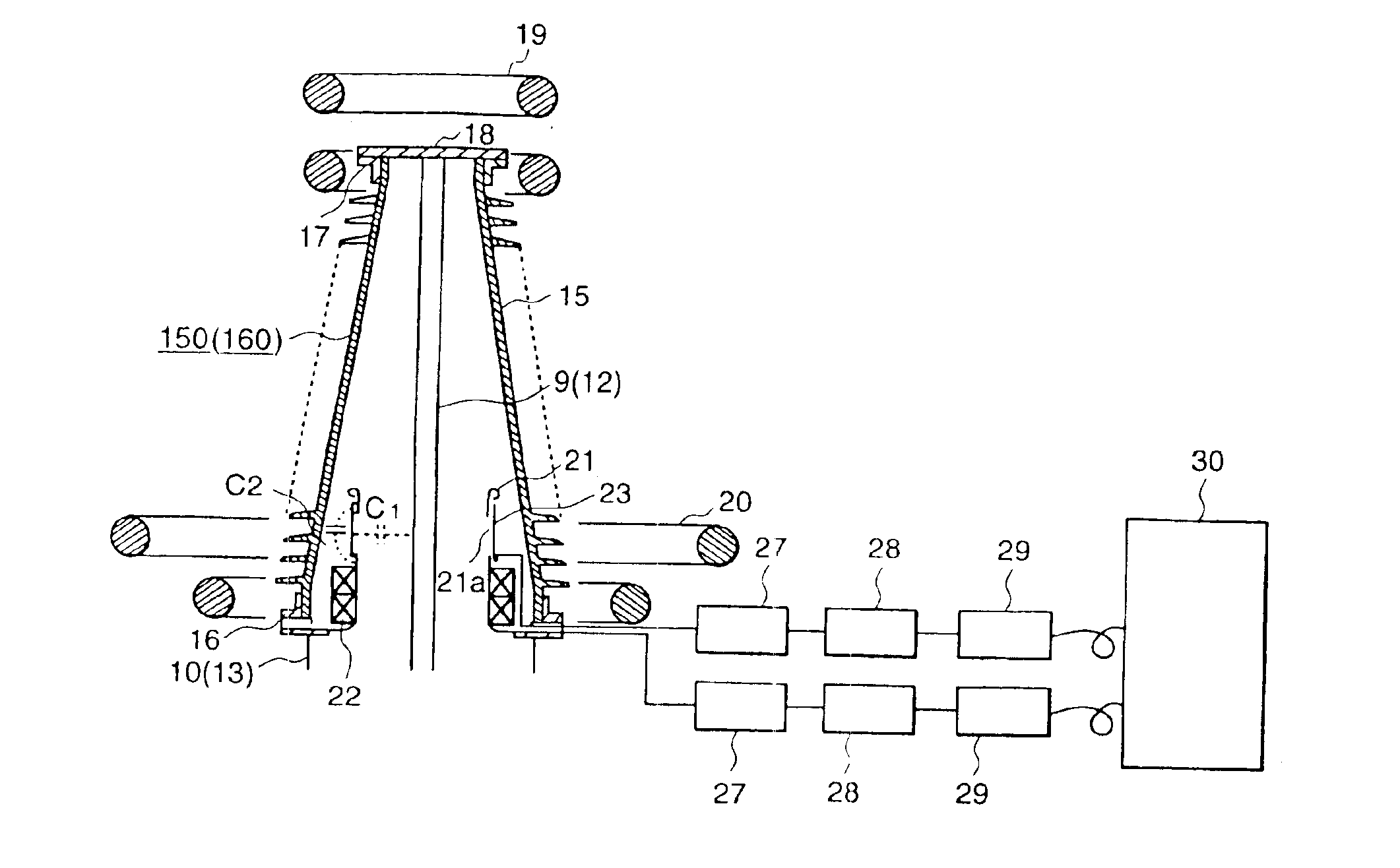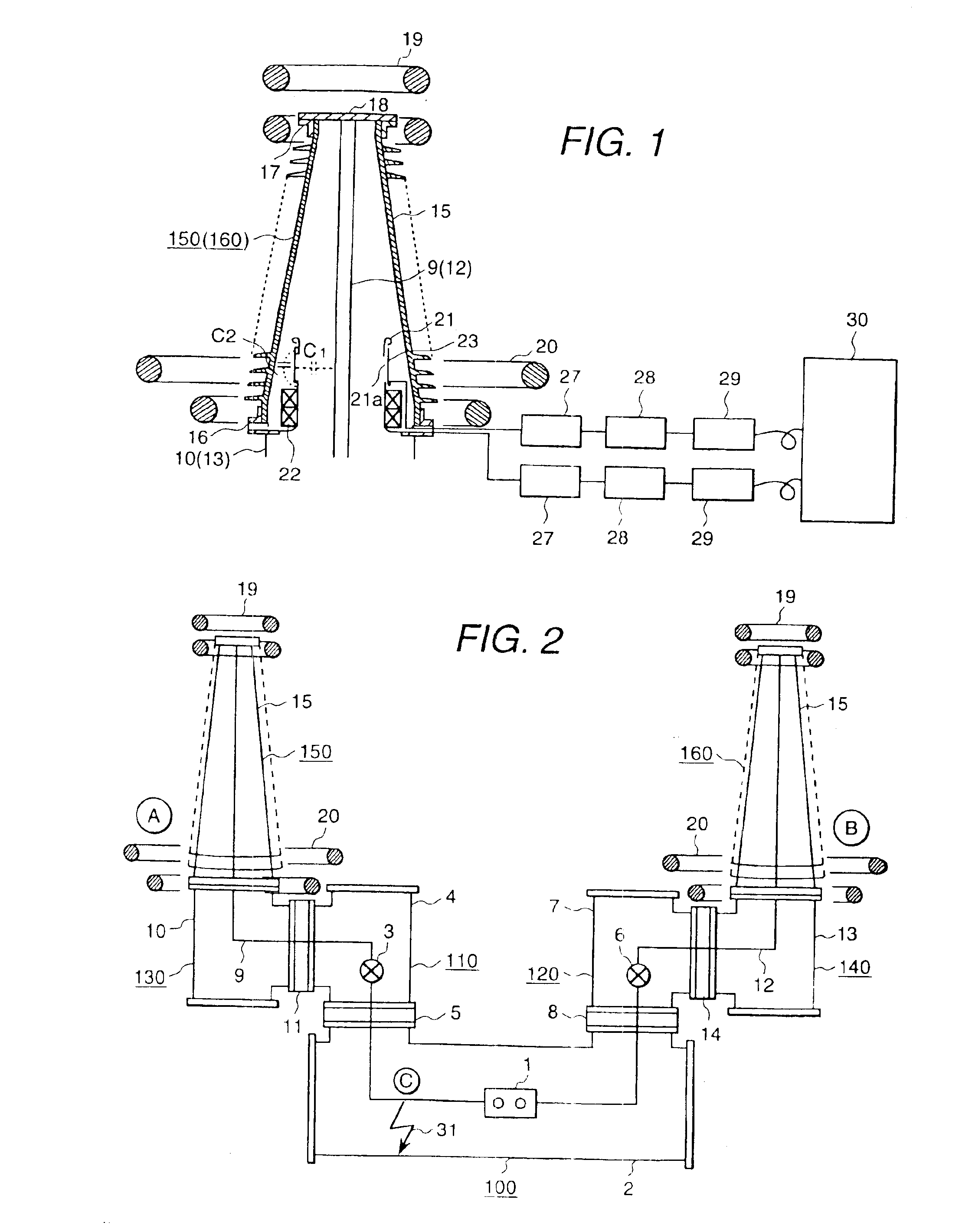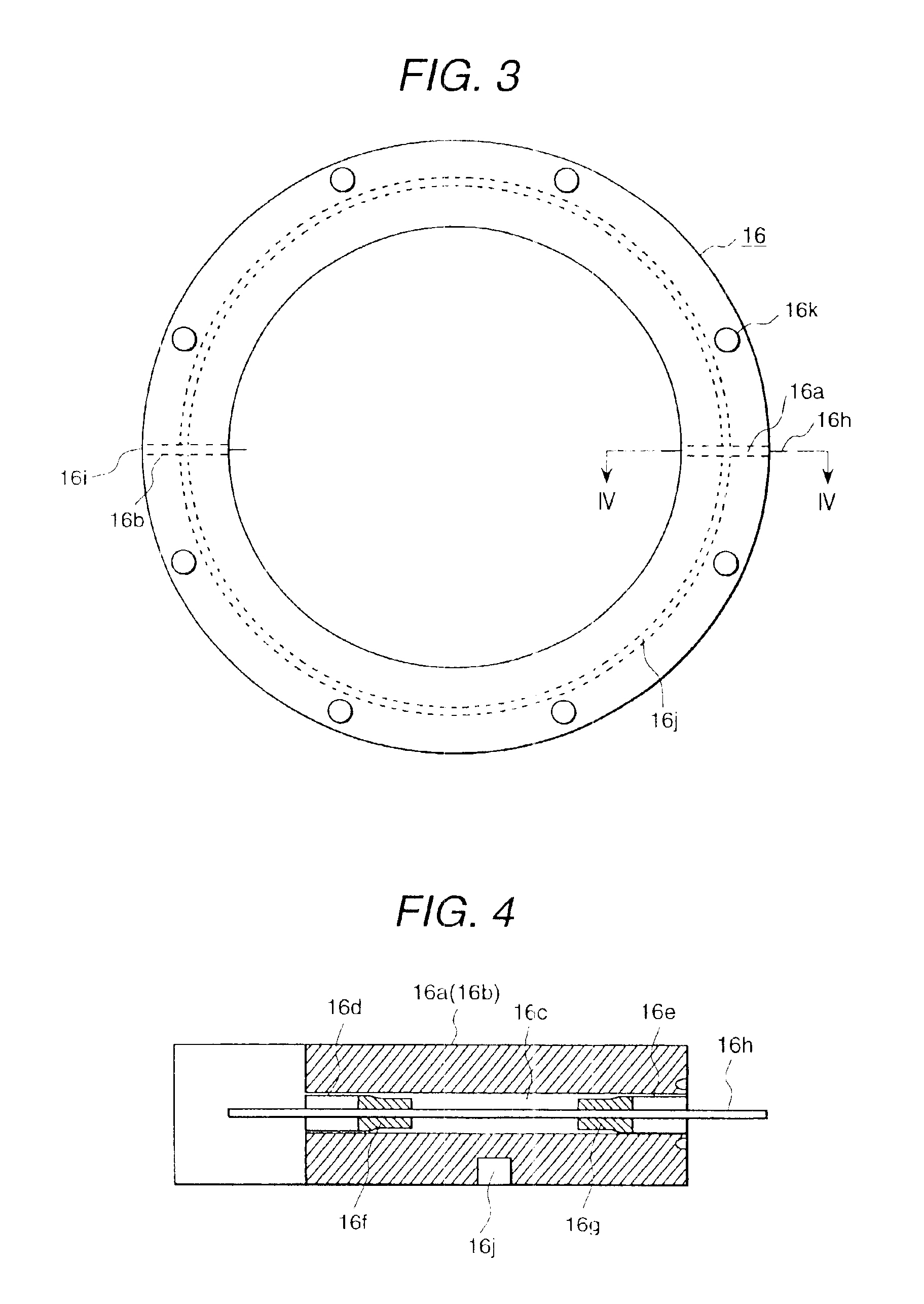Gas insulating apparatus and method for locating fault point thereof
- Summary
- Abstract
- Description
- Claims
- Application Information
AI Technical Summary
Benefits of technology
Problems solved by technology
Method used
Image
Examples
embodiment 1
(Embodiment 1)
A first embodiment of the present invention will be described with reference to FIG. 1 through FIG. 6. A gas insulation switchgear of this embodiment is a compound switchgear in which an antenna bus, not shown, is electrically connected so as to constitute one phase component. Therefore, in an electric power station, such as an electric power substation, etc., three gas insulation switchgears of this embodiment are arranged side by side in each bay.
In the drawing, there is shown a circuit-breaker unit 100 which is arranged such that a circuit-breaker 1 is contained in a tank 2 filled with SF6 gas (sulfur hexafluoride gas), i.e. an insulating medium. The circuit-breaker 1 has a pair of contacts consisting of a fixed contact and a movable contact, shuts down the fault current by the contacts' opening action, and is operated by a manipulator, not shown. The tank 2 is a grounded, cylindrical metal container.
On one side of the circuit-breaker unit 100, there is provided a d...
embodiment 2
(Embodiment 2)
A second embodiment of the present invention will now be described with reference to FIG. 7. A gas insulation switchgear of this embodiment is a switchgear arranged such that a gas insulating bus is a three-phase package type and other portions are phase separation types, and provided, for example, as a low-pressure side switchgear in an electric power substation.
In the drawing, there is shown a circuit-breaker unit 200 which is arranged such that a circuit-breaker 40 is contained in a tank 41 filled with SF6 gas, i.e. an insulating medium. The circuit-breaker 40 has a pair of contacts consisting of a fixed contact and a movable contact, shuts down the fault current by the contacts' opening action, and is operated by a manipulator 42 provided at the lower portion of the tank 41. The tank 41 is a grounded, cylindrical metal container.
On one lower-end side of the circuit-breaker unit 200, there is provided a disconnector unit 210 which is arranged such that a disconnecto...
embodiment 3
(Embodiment 3)
A third embodiment of the present invention will be described with reference to FIG. 8. This drawing shows the structure of the gas insulating bushing only; the entire structure of the gas insulation switchgear is not shown. Further, the gas insulating bushing of this embodiment includes the gas insulation switchgear according to the first and second embodiments mentioned above, and is applicable to all gas insulation switchgears having a gas insulating bushing at a power inlet or a power outlet.
In this embodiment, a large flange portion of a tank 75 is formed on the outer-periphery side and an annular metal (aluminum) container 77 is installed thereon. The container 77 contains a current transformer 22. The container 77, which is grounded and installed so as to surround the lower-end side periphery of the porcelain tube 15, can relax the electric field as the external shield can. Further, this embodiment eliminates an internal shield and relaxes the electric field of ...
PUM
 Login to View More
Login to View More Abstract
Description
Claims
Application Information
 Login to View More
Login to View More - R&D
- Intellectual Property
- Life Sciences
- Materials
- Tech Scout
- Unparalleled Data Quality
- Higher Quality Content
- 60% Fewer Hallucinations
Browse by: Latest US Patents, China's latest patents, Technical Efficacy Thesaurus, Application Domain, Technology Topic, Popular Technical Reports.
© 2025 PatSnap. All rights reserved.Legal|Privacy policy|Modern Slavery Act Transparency Statement|Sitemap|About US| Contact US: help@patsnap.com



